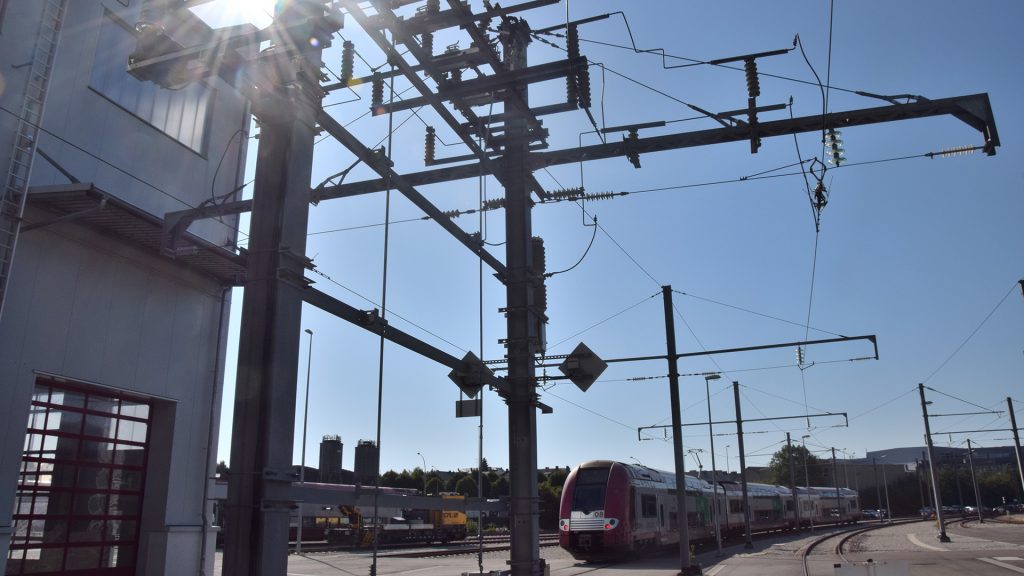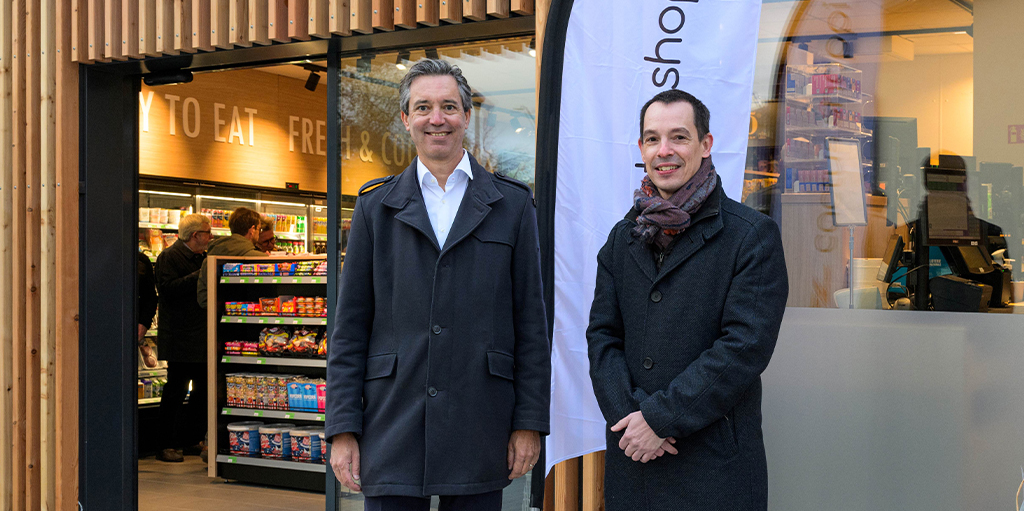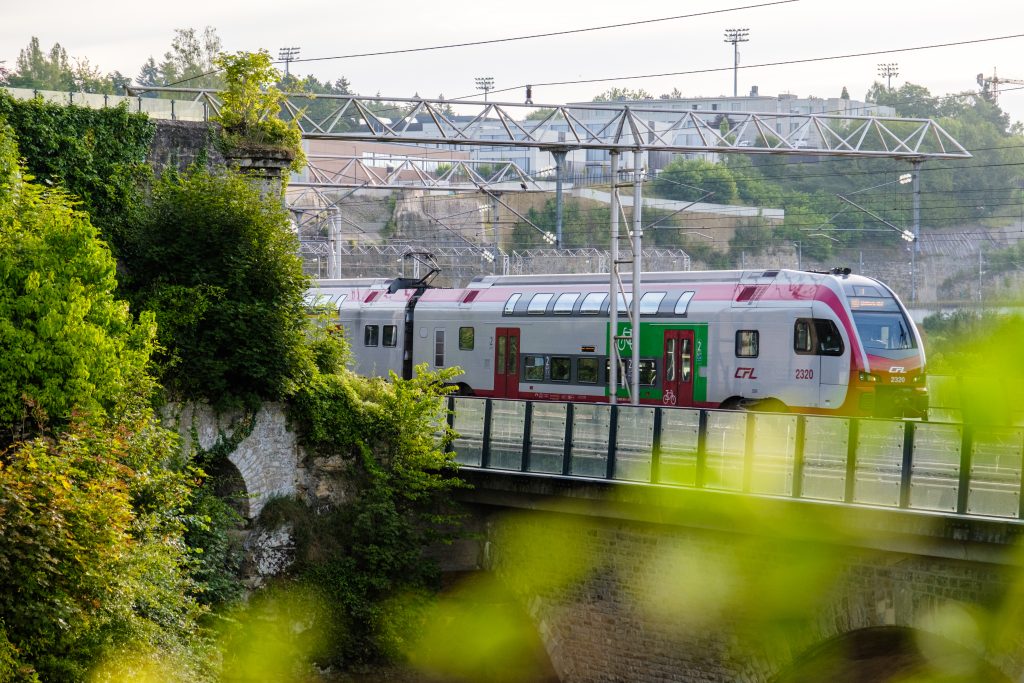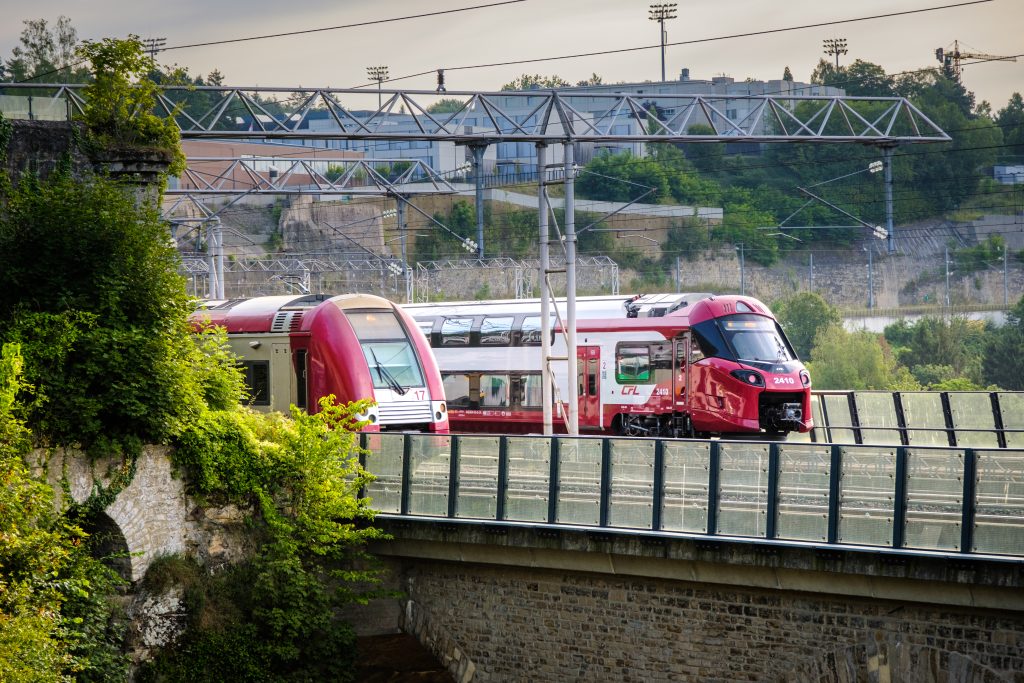
The effects of the heat and how the CFL prepare for it

It is important for travelers to reach their destination in comfort, at any time and no matter the weather. Goods transported by rail must also arrive on time. Whether passenger trains or freight trains, the CFL staff constantly ensures the smooth operation of its rolling stock. In anticipation of the summer and to prepare for hot weather, the air-conditioning systems on the various CFL trains and locomotives are being monitored. These summer temperatures also put a strain on the railway tracks. To ensure the integrity of the network and the safety of passengers, the CFL take precautions throughout the year.
Most often placed on the roof of the train, train air conditioning systems are damaged by exceptional summer temperatures, sometimes exceeding 35 degrees.
Impact on passenger traffic
Permanent openings and closures of the doors, at prolonged halts of trains at stations, under a blazing sun, are several factors that make the refreshing of the train cars particularly difficult. Under intense usage, the air conditioning unit, equipped with safety measures, turns off automatically.
Preventive measures
In anticipation of the summer heat, preventive checks are conducted annually. In the CFL workshops, several components, electronic and mechanical, train cooling systems, are subject to inspections. Compressors, evaporator, condensers, pressure regulators and valves are scanned, cleaned and, if necessary, replaced. Various filters are replaced and the heat exchangers are cleaned.
It is not only the air conditioning boxes on the train roofs that are checked. In train cars too, every ventilation device is scrubbed. The CFL staff also ensures the correct operation of sensors and temperature sensors.
In addition to the air-conditioning and ventilation components, all the equipment necessary for cooling the traction systems of the rolling stock is subject to a specific inspection, in preparation for the summer, such as the fans of the inverters or high-voltage transformers.
Know-how through in-house training
Only employees trained in refrigeration technology and having such a certification are authorised to work on the air conditioning systems.
Given the increased internal requirements for mechatronic technicians in refrigeration technology, the CFL have since 2016 put in place, in co-operation with the Ministry of Education, the DAP refrigeration technician. It is an apprenticeship that spans three years. In other words, trainees have the opportunity to divide the week between working in the CFL workshops and school lessons.
This new type of “DAP” (French: diplôme d’aptitude professionnelle) started at the beginning of the 2017/2018 school year and trains trainees in the diagnosis, maintenance and repair of all air conditioning systems of CFL rolling stock.
Station and stop repairs
Equipped with a safety measure preventing it from overheating, the air conditioning unit might switch off automatically whilst a train is on the tracks. The train can’t return directly to the workshop, that’s why several mobile teams move quickly in the field, at any time, to detect and to trouble shoot. The priority is always the safety of the passengers as well as their comfort.
Water distribution in Luxembourg Central Station
The CFL maintain, modernise and expand the rail network on a continuous basis. Projects that steadily contribute to improve customer service. With this in mind, during August and September 2020, the CFL will carry out engineering work at various locations on their network.
To ensure that the work can be carried out quickly and safely, some section will need to be closed temporarily. The CFL are aware of the impact that these closure phases may have on their customers. Consequently, these engineering works will be carried out during periods of reduced traffic, such as school holidays, weekends and even nights, to reduce inconvenience as much as possible.
In anticipation of the engineering works and to ensure that passengers can travel whilst certain sections are closed to train traffic during the summer, the CFL are setting up a substitute bus service. When the temperatures rises in the summer, the CFL distribute water to passengers departing with a substitute bus.
“Lateral distortion” of the track
The tracks are maintained by wooden or concrete sleepers. They are supported by a layer of ballast, a bed of natural stones, which stabilises the track and absorbs the stresses exerted on the track, on the one hand, by the passage of a train and on the other hand partly, by the weather conditions.
Due to the high temperatures, the steel composite rail, fastened by the sleepers, expands. The way can be deformed. This is called a “lateral distortion of the track”.
Important preventive measures for the track
To avoid any effect of the heat on the tracks during the summer, as soon as the tracks are layed and welded, it’s ensured that the temperature of the rails stabilises between 20 and 32 ° C. With this precaution, the stress on the rails are relatively low. The risks of dilation of the tracks in summer, or of their contraction in the cold, in winter (with risk of rail breaking), are reduced.
The CFL ensure the use of more resistant materials to the stresses exerted on the tracks by the passage of trains. Thus, the tracks placed on a bed of natural stones is quite resistant to the pressures caused by temperature variations. The wooden sleepers give way to the heavier concrete sleepers, which, combined with the natural stone ballast, ensures better track maintenance and better resistance to the passage of a train.
To avoid a distortion of a track, or at least to recognise the warning signs as soon as possible, regular and targeted inspections are carried out in early summer on the network lanes.
State-of-the-art technology for optimised monitoring
With know-how, quality, safety and performance, innovation is an integral part of the CFL’s corporate strategy. This is how the CFL continually invest in IOT (Internet of Things). At the same time, the CFL have taken advantage of three state-of-the-art measuring facilities to monitor the state of the network.
Located at Mecher, Esch-sur-Alzette and Luxembourg, these three stations make it possible to continuously measure the temperature of the tracks on the entire network. Via digital thermometers placed on the tracks, any data indicating the temperature of the rails is recorded and transmitted electronically to the concerned CFL services.
This makes it possible to keep a constant eye on the entire network, at a glance and to alert the services concerned if the tracks are weakened by high temperatures.

This temperature-sensitive technology can accurately identify sensitive areas and provide additional inspection tours during the summer.
In the event that a “lateral distortion” of the track is detected following an inspection tour, or signaled by a passing train, passenger or freight, in the area, appropriate measures are taken. The passage of the trains on the affected section is at a reduced speed. If necessary, the lane is temporarily closed and the lane is repaired before the traffic resumes safely
On the Swiss Federal Railways (SBB) network, on the German DB network and the ÖBB network in Austria, a new measure to prevent the effects of hot weather on rails is being tested. These tests consist of painting the side of the tracks in a clear/white colour, which would allow, according to first observations, to lower the temperature of the rails by a few degrees. This is not being undertaken by CFL at this time, given the effectiveness of the above-mentioned preventive measures.
Freight transport is also impacted
Freight transport (combined or conventional) must remain efficient despite the high temperatures. High temperatures put the air conditioning systems used on freight locomotives to the test. In any situation the driver must be able to handle the locomotive. Good ventilation in the driver’s cab is therefore essential. At the same time, knowing that freight trains generally travel long distances, the driver can take extra breaks in case of high temperatures.





